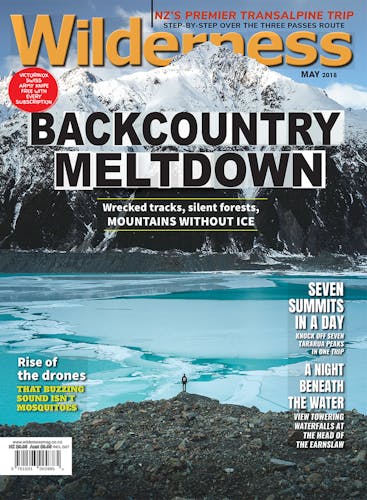There’s nothing better than a bluebird day in the hills, but given New Zealand’s subtropical location, it’s more than likely you’ll encounter rain at some point.
Look for vents
No matter how breathable a waterproof jacket claims to be, it’s unlikely to be able to cope with the amount of sweat generated when puffing up a large hill. Having vents – also known as pitzips – on your jacket will increase airflow and help you stay drier.
Put the down away
If it’s cold, it’s tempting to wear your down jacket. Unfortunately, very few down jackets are waterproof, and even fewer are seam sealed. Down only holds air when it’s completely dry, so keep it well inside your pack and layer up with thermals and a fleece instead. Save the down jacket for at the hut or campsite.
Use a pack liner
The best way to keep your gear dry is to use a heavy-duty pack liner – it can double as an emergency shelter – or several dry bags, which has the benefit of keeping your gear organised.
Invest in a rain cover
A wet pack is a heavy pack, and even the most water-repellent fabric will struggle with a Fiordland downpour. Water can also weasel its way into a pack through the zips and seams. If you don’t want to use a pack liner, a rain cover is the next best option: it’s small, lightweight, and comes in a variety of sizes to suit most packs.
Pack logically
Opening your pack as little as possible while it’s raining will go a long way towards keeping the contents dry. Store the day’s lunch and snacks in the top of your pack and if possible, stash your beanie and gloves in your raincoat’s waterproof pocket, where they can be reached easily if you need them.
Rethink overtrousers
There’s a reason that Kiwis are renowned for wearing shorts in all conditions while tramping – legs can be dried faster than long pants. Unless it’s bone-chillingly cold, a pair of shorts coupled with polypro leggings and a pair of gaiters are usually sufficient for staying warm while walking in the rain.
Check your gear at home
The middle of the night, during a howling nor’wester, isn’t the best time to discover that the seam sealing on your tent needs replacing. Get into the habit of hecking your gear for wear and tear after each trip, then organise any repairs straight away.








